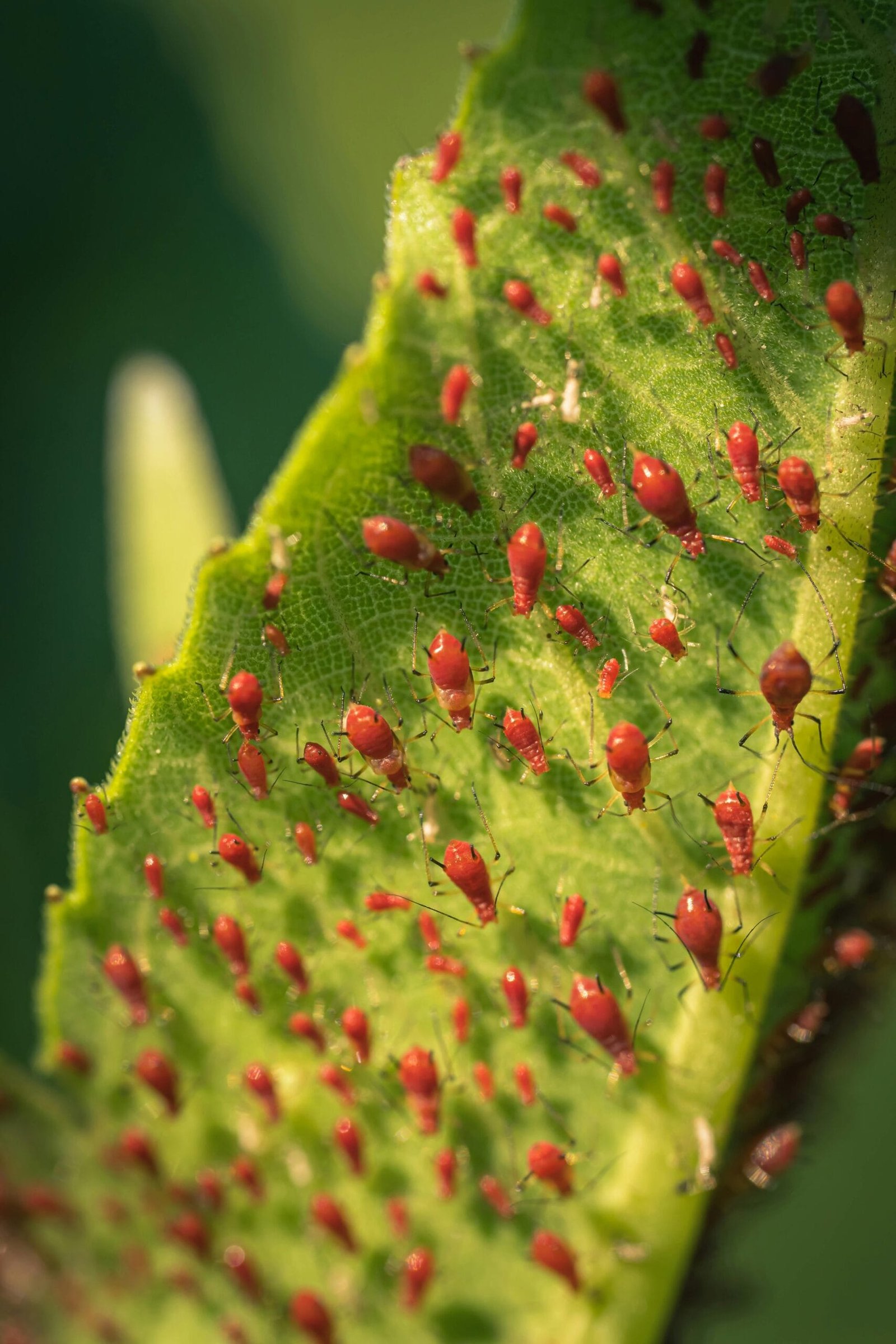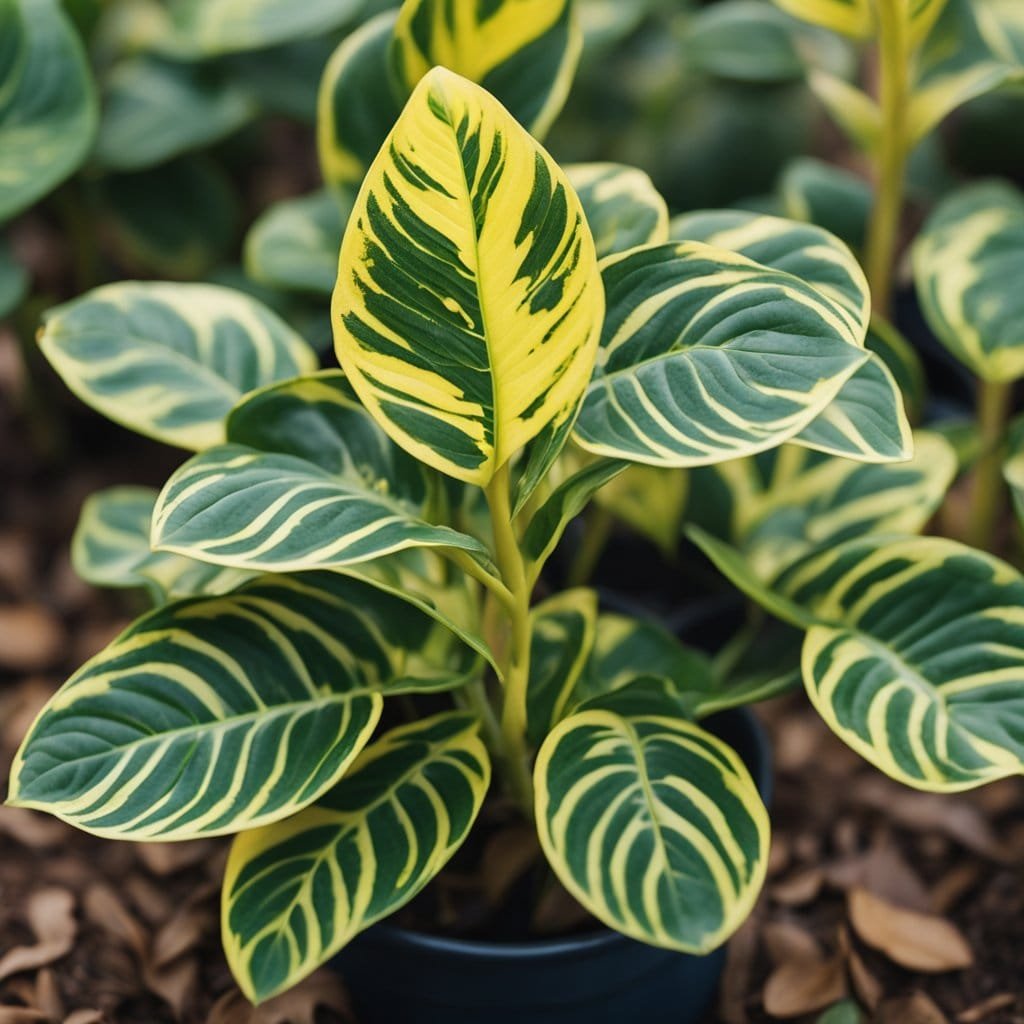
Common Prayer Plants Problems: Identifying Issues with Watering, Pests, Diseases, and More
In the world of houseplants, prayer plants are probably some of the most well-known due to their special patterns and unique behavior. These plants belong to the Marantaceae family, which includes genera like Maranta, Calathea, and Stromanthe. They’re named prayer plants because their leaves tend to fold together at night, resembling hands in prayer. This fascinating trait makes them a popular choice among plant lovers.

When it comes to common issues, prayer plants can face problems related to watering. Overwatering can lead to root rot, while underwatering might cause leaves to wilt. Another concern is pests and diseases, which can seriously affect the health of these plants. Conditions like pest infestations need prompt attention to prevent damage. Understanding these problems can help maintain a healthy and thriving prayer plant collection.
Yellowing Leaves

Yellowing leaves on prayer plants can indicate several issues. Often, it’s due to improper watering. Overwatering or underwatering may stress the plant, causing leaves to turn yellow. I make sure to water mine only when the top inch of soil feels dry.
Temperature can also affect leaf color. Prayer plants are sensitive to cold and need temperatures above 55°F. When temperatures drop, I notice more yellow leaves.
Pests could be another reason. Insects like spider mites can damage the leaves, leading to yellowing. I check my plants regularly and treat them if I find any pests.
Brown Leaf Tips
Brown leaf tips on prayer plants can be a common issue that signals a few different problems. I’ve noticed that improper watering is often to blame. Prayer plants need moist soil, but too much water can lead to soggy roots. This can suffocate the plant, causing brown tips to appear on the leaves.
Another frequent cause is too much sunlight. Prayer plants thrive in indirect light. Placing them in direct sun can scorch the leaf tips. I always recommend keeping them near a window with a curtain to filter the light and protect the leaves.
Additionally, the quality of water might affect the plant. Using hard water can leave mineral deposits, resulting in browning. I’ve found that using filtered or distilled water helps prevent this issue.
Curling leaves
When I see curling leaves on my prayer plant, it often indicates an issue with watering. Both overwatering and underwatering can cause the leaves to curl. Signs of overwatering include drooping and yellowing leaves, while underwatering may lead to brown, crispy margins.
Humidity also plays a crucial role. Prayer plants thrive in environments with at least 50% humidity. If the air is too dry, like near a heater, the leaves may start to curl.
Another factor I consider is water quality. Chemicals in tap water, such as chlorine and fluoride, might lead to leaf curling. Using filtered or distilled water can help prevent this problem.
Pests like aphids could also be a reason. They damage the plant by sucking sap, which might cause the leaves to curl. Keeping an eye out for these small bugs is essential for maintaining healthy foliage.
Root Rot
Root rot is a common issue that can affect prayer plants, usually caused by excessive watering or poor drainage. When the roots sit in waterlogged soil, they start to decay. This condition prevents the plant from absorbing essential nutrients, leading to wilting and yellowing leaves.
I find that ensuring well-draining soil is crucial to prevent this problem. Using pots with drainage holes helps excess water escape, reducing the risk. Checking the soil moisture before watering by feeling the top inch can also help manage the plant’s water needs effectively.
Pest infestations
Prayer plants are prone to several common pests. One issue I often encounter is spider mites. These tiny bugs thrive in dry conditions and can create small webs on the leaves. Keeping the environment humid can help prevent their infestation.
Another pest I deal with is mealybugs. They look like little white cotton masses on stems and leaves. Simply wiping them off with a damp cloth can be effective for mild cases.
Scale insects are also problematic. They appear as small, shiny bumps on the plant. Regularly inspecting the leaves helps catch these issues early. For heavier infestations, using insecticidal soap is a good practice to manage these unwelcome guests.
Wilting Stems
I’ve noticed wilting stems in prayer plants can be a sign of several problems. One common issue is improper watering. Both overwatering and underwatering can cause the stems to droop. It’s essential to keep the soil consistently moist but not soggy.
Compacted soil might also lead to wilting. Without good drainage, the roots can essentially drown, leading to weakened stems. Make sure the pot has drainage holes to prevent this issue. Pests like spider mites or aphids can also harm the stems, causing them to droop. Keeping an eye out for tiny insects on the plant can help address this problem quickly.
Slow Growth

I’ve noticed that my prayer plant sometimes grows slowly. This can be due to a few reasons. First, if there is a nutrient deficiency, the leaves might turn yellow and new growth can be stunted. Using the best fertilizer and compost can help address this issue.
Another factor can be low light. Prayer plants prefer indirect sunlight. If they don’t get enough, their growth may slow down. Ensuring they receive the right light can help them thrive.
Lastly, temperature affects growth. Prayer plants like warm environments. If temperatures are too low, growth might be sluggish. Keeping them in a warm area helps maintain healthy growth.
Leaf Drop
Leaf drop in prayer plants can often be a sign of excessive light. When these plants receive too much direct sunlight, their leaves may become scorched and eventually fall off. I find that placing them in a spot with bright, indirect light helps prevent this issue, as they prefer a more shaded environment.
Another cause of leaf drop is overwatering. Prayer plants like their soil to be moist, but not soggy. Too much water can lead to root rot, which causes leaves to drop. I recommend watering when the top inch of soil feels dry to the touch.
Temperature fluctuations are also a factor. If the plant experiences sudden changes in temperature, such as from drafts or heating vents, leaves may fall. Keeping the plant in a stable environment with consistent temperatures can help maintain its health.
Spotted Leaves

When I see spots on my prayer plant’s leaves, it’s usually a sign of a problem. Most often, the culprit is a pest. Small insects like spider mites or aphids can cause spots on the leaves by feeding on them.
Fungal or bacterial infections can also result in leaf spots. High humidity and poor air circulation can create an environment where these issues thrive. I check for mold or any discoloration to identify these problems.
If the problem is neither pests nor disease, I consider mineral buildup. Hard water might leave spots on the leaves over time. By using filtered water, I avoid this issue.
Regularly inspecting the plant’s environment helps me catch these issues early. Prompt action ensures my prayer plant stays healthy and vibrant.
Mildew Growth

When I deal with mildew on prayer plants, I notice a white, powdery substance on the leaves. This mildew thrives in humid environments with poor air circulation. It’s important for me to monitor these conditions closely.
To prevent mildew, I make sure my plants are in a well-ventilated space. If mildew appears, I gently wipe the leaves with a mixture of water and baking soda. This helps me remove the mildew and protect the plant’s health. Regular checks ensure the mildew doesn’t return.
Watering Issues

Prayer plants struggle when their watering needs aren’t met. Overwatering can lead to yellow leaves and root rot, while underwatering causes wilting and drooping leaves.
Overwatering Symptoms
When I notice the leaves turning yellow, it’s often a sign of overwatering. This can lead to root rot, where the roots become mushy and the plant weakens. Overwatered prayer plants may have soil that’s consistently soggy.
The leaves can also become limp or develop brown, water-soaked spots. To prevent this, I ensure the pot has good drainage and avoid letting the plant sit in standing water.
Underwatering Signs
When underwatered, prayer plants can develop crispy, brown leaf edges. This tells me they’re not getting enough moisture. The leaves may curl or feel dry to the touch, indicating they’re stressed.
Wilting leaves are another clear sign. I find it helpful to water thoroughly when the top inch of soil feels dry. If the plant appears droopy even after watering, it might need more frequent or consistent watering to thrive.
Light-Related Problems

Prayer plants often face issues due to improper light levels. Plants that receive too little light may stretch towards the source, while too much light can cause leaf discoloration and damage. It’s important to monitor and adjust light conditions to ensure healthy growth.
Insufficient Light Indicators
If a prayer plant doesn’t receive enough light, it will show signs that are hard to miss. The plant may start developing leggy growth, meaning the stems become long and weak. Leaves might become smaller and the plant often leans towards any available light source. This is a clear sign it’s not getting what it needs.
To fix this problem, I should try moving the plant closer to a window where it can get more light. Prayer plants do well in bright, indirect sunlight. If natural light is not enough, using a grow light can also help. It’s important to avoid sudden changes in light levels to prevent stress on the plant. Regular observation will help in adjusting the plant’s location effectively.
Excessive Sunlight Effects
Exposing a prayer plant to too much direct sunlight can be harmful. The leaves might start showing scorch marks—brown or crispy edges—and colors can fade, losing their vibrant green. This happens because the intense light damages the cells in the leaves.
To address this issue, I should move the plant to a shaded area with indirect light. This could be a spot further back from a window. It’s best to avoid direct sunlight, especially in the afternoon, when the sun is strongest. If outdoor growing is considered, a shaded area will be ideal. Checking the leaves regularly for any signs of sun damage helps in maintaining the plant’s health.
Pests and Diseases
Prayer plants can face issues from pests like spider mites, aphids, and mealybugs, or from fungal infections. Identifying these problems early helps keep your plant healthy and thriving.
Common Pest Attacks
I’ve noticed that prayer plants often attract pests such as spider mites and aphids. Spider mites are tiny and leave fine webs on the leaves. When these pests invade, leaves might look yellow or spotted. I’ve found that aphids leave a sticky residue and can cause the leaves to curl and become deformed.
To tackle these pests, I use neem oil or insecticidal soap. Consistent monitoring and quick treatment are crucial. Another pest, mealybugs, are easy to identify due to their cottony appearance. If I spot them, a thorough cleaning with a damp cloth followed by a treatment with neem oil works well. Regular inspection is key for preventing major infestations.
Fungal Infections
Fungal infections are another issue I keep an eye on. These can cause root rot and powdery mildew. Root rot happens when the soil is too wet, leading to wilting and mushy roots. To prevent this, I ensure proper drainage and avoid overwatering my plant.
Powdery mildew appears as a white, powdery substance on leaves. Ensuring good air circulation around the plant can help prevent this. If it occurs, I treat it by removing affected leaves and applying a mixture of water and baking soda. Managing humidity levels is important, as high humidity can encourage fungal growth. Regular care and attention help keep fungal problems at bay.
Frequently Asked Questions

Prayer plants are quite popular but can sometimes face issues like yellow leaves, browning tips, or pest infestations. Below, I address some of the common questions about problems these plants encounter and how to manage them.
What are the common signs of overwatering in prayer plants?
Overwatering can lead to yellowing leaves, wilting, and root rot. Root rot occurs when the roots stay too wet and start to decay. Keeping the soil too moist can suffocate the roots, impacting the plant’s health.
How can you identify and manage pests that typically infest prayer plants?
Pests like spider mites and mealybugs are common. Look for small webs or tiny white insects on the leaves. To manage them, wipe the leaves with a damp cloth or use insecticidal soap to remove the pests.
What symptoms indicate that a prayer plant is underwatered?
Underwatering can cause curling leaves and dry, crispy edges. The soil might be dry to the touch, and the plant may droop. Regularly check the soil moisture by feeling it with your fingers and water when it feels dry an inch down.
Why do prayer plant leaves sometimes turn yellow or brown?
Yellow leaves can be due to poor drainage, overwatering, or lack of nutrients. Brown tips often result from low humidity or underwatering. Proper watering and maintaining humidity can help prevent these issues.
What are the common fungal diseases that affect prayer plants, and how can they be treated?
Fungal infections like leaf spot and powdery mildew can affect prayer plants. Symptoms include discolored spots or a white powdery substance on leaves. Treat by removing affected leaves and using a fungicide or improving air circulation around the plant.
How can you tell if your prayer plant is receiving too much direct sunlight?
Too much direct sunlight causes leaves to scorch, leading to brown, crispy edges or faded leaf colors. I recommend placing the plant in indirect light to avoid such damage while still allowing it to thrive.












